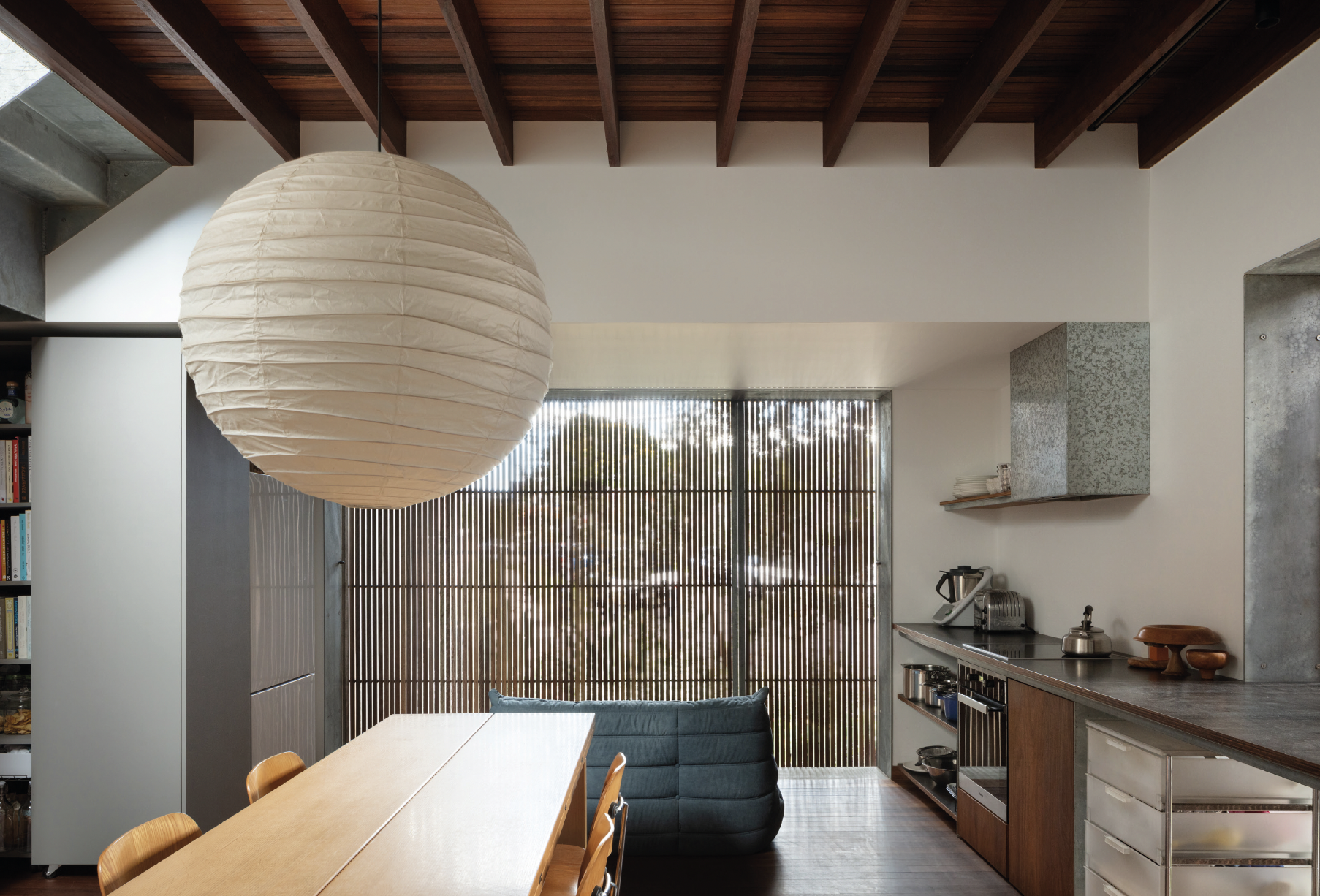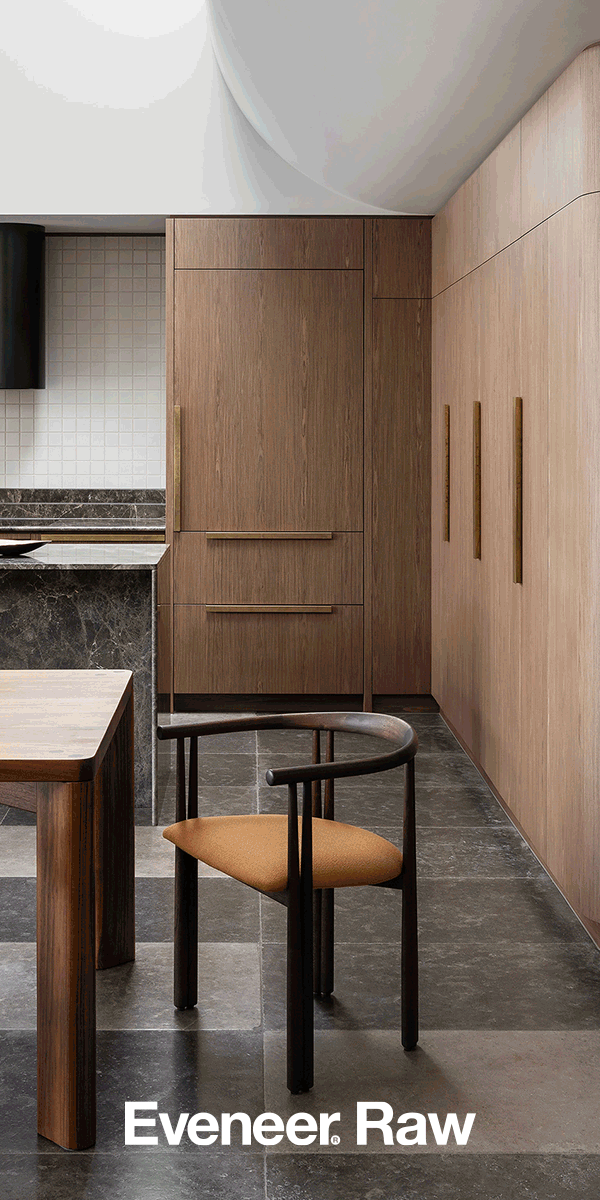Herman Miller and Knoll – both titans of modern design – have merged into a single entity, MillerKnoll, marking a strategic and dynamic...
Bondi House
The award-winning Bondi House by Anthony Gill Architects eschews suburban conventions. Home to the architect and his family, this paredback residential alteration embeds engagement with the local community into the design, favouring open spaces and simple structures.
Essay
Jack Gillbanks
Photography
Clinton Weaver

Society and architecture are indelibly linked. Our houses inscribe within them changes to our social lives, leaving markers of the technological, economic and environmental shifts of the day. Architecture shapes and establishes these patterns. As a profession, it has the responsibility to usher in change. More often than not, the built environment is reconstructed in the image of the familiar; the architect bent to the will of the market. Society, however, is changing. We require new models for living, and the architect’s own house offers opportunity for exploration and experimentation. The home of architect Anthony Gill is one such experiment, and an award winner no less.1
Sunday turned up a dazzling Sydney morning and by 10 o’clock I arrive at the North Bondi house designed by Anthony Gill Architects. I circle it at first, searching for a park in the one way streets that surround the peninsular wedge of a corner block. You can’t miss it, the house announces itself at the point of the site, a matchstick batten-clad volume, sentinel and mute among the glistening clay roof tiles atop a red brick interwar semi – Nishizawa meets Godsell by way of Levittown.
I’m early, and as I roll around the building hoping for that park to emerge, glimpses of life unfold like a dolly shot around a Bruce Beresford ’70s mise-en-scène. You know the one, think Don’s Party or Puberty Blues, the image of a lazy summer, bodies floating in and out of shot. It’s cool, typically Australian and totally unpretentious. Here, a large picture window to the street is intersected by the kitchen counter – coffee being prepared, conversations seen rather than overheard. Gill’s son, Cosmo, lies at the edge of the house between living space and garden, on a sun bleached microsuede sofa. One arm hangs in the garden – lying back, head in the sky – the other throws an Aussie-rules footy into the air, impatiently waiting for friends to arrive. Gill appears, throws a leg over a bicycle, unlatches the mesh fence and tucks the bike away behind the house. Here is a suburban Sunday morning unfolding and on display.
Despite the new first floor, the existing building from which it emerges is largely intact – only an additional 12 sqm was added to the overall floor area – and highly precise at that. The original backyard fence has been removed and replaced with a wide-gauge steel farm mesh, finished with an angle to its top. No tricks here. With the palisade fence abandoned, the living room is effectively open to the street. A native garden by Sue Barnsley has been planted in the space between the building and the boundary. Existing openings have been simply enlarged to the finished floor level. Not a single additional brick was required during construction. The windows are all operable, sliding away entirely to internal cavities. The openings are fitted with layers of screening, batten sliders on the outside and curtains inside. The overall effect is a richly layered and adjustable perimeter that engages and withdraws from the footpath, mere metres away.
Gill invites me in and, along with his wife Sarah, we sit and talk. We shoot the breeze comfortably – the windows are open, it fires back. The couple present themselves and the house in a calm manner. The rest of the family are also part of the conversation, floating in and out of rooms, garden and street in a way that feels natural to the house.
Internally, the two existing bedrooms have been adjusted to make three. Seemingly impossible given the size of the original configuration, the efficiencies are a result of a dramatic overlapping of programs, most notably in the bathroom where the basin and shower are separated from the corridor by a single curtain.
The tectonics of the bedrooms are in service of the living room, the footprint of which remains unchanged; only the ceiling height is increased with the addition of the new volume above. The room acts as living, dining, kitchen and verandah. Furnished with an upright piano, a single large table and a sofa, it is shouldered by an open kitchen bench, the only thing built in. All shelving is open and on wheels. It’s a space that feels at ease. Appliances are not hidden behind the typical veneer of hydrophobic mono surfaces – rather, they occupy the space as furniture, in an offhand way. I mean, really, who’s afraid of a fridge anyway?
A steel staircase leads to the inner surface of the timber clad abstraction visible from the street. At the top lies a plywood-lined lounge room nestled between a roof garden and a high walled outdoor room, the unlined interior of the batten clad volume. The eccentricity of the outdoor space recalls Le Corbusier’s dalliance with surrealism in his high-walled rooftop for Charles de Beistegui, featuring the makings of a grand room under the open sky. Rather than pomp though, Gill’s room recalls coastal summers and sand-clogged toes – a single cast iron tub sits under the open sky and through the battens it is possible to see the street below. This is the beachside shower made homely. One can imagine soaking in the warm bath as the first stars emerge overhead, views across the neighbourhood, salt on the air, the evening news heard faintly in the background. This could be the most luxurious bathroom in all of Sydney and not a scrap of marble in sight.
There is a matter of fact-ness to the spaces that challenge you to think of them in any other way. The Bondi House is entirely social in its organisation, at one with the family unit as with the street. The house challenges the typical compartmentalisation of the family home in its sharing of space, and the adjacencies of its programs offer the opportunity for familiarity and intimacy. By making itself permeable to the street it allows for air and light and a connection to the neighbourhood. Conversely, it offers the street the family in a form of generosity befitting the corner site, becoming a lantern of sociality not typical of the suburban lot with its fiercely guarded fences. The house does not broadcast its intentions as is typical of such architectural statements. Rather, the antics of the tectonics are made accessible through the familiarity of its palette. Nostalgia here acts as a camouflage for the subversiveness of its planning. The project could only be described as quietly radical. And behind all of this considerable energy is a proposition as timely as it is urgent: build less, better.
1. The house won the Hugh and Eva Buhrich award for Residential Architecture – Houses (Alterations and Additions) at the 2022 NSW Architecture Awards. As at the time of writing, it is in the running for the National Architecture Awards.




